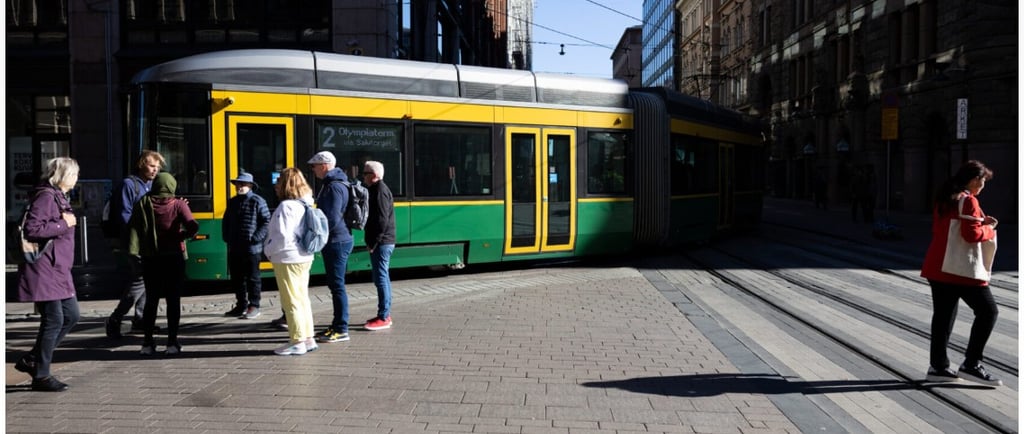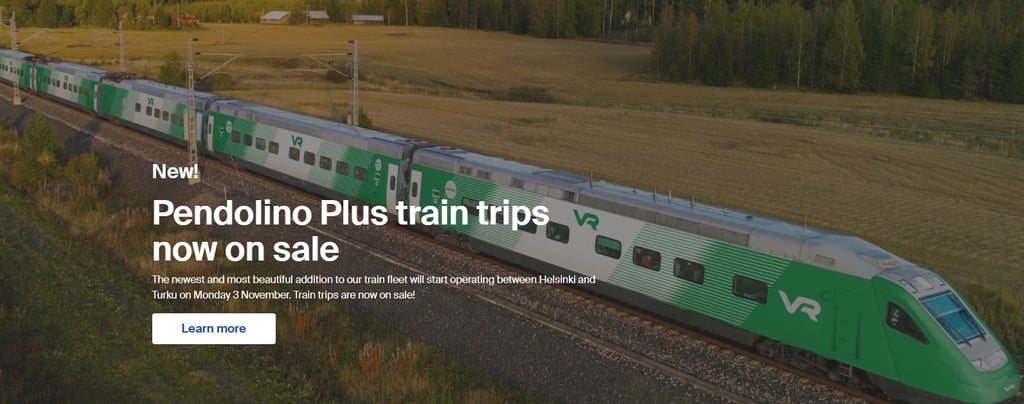Trams, bikes and trains: What can we learn from Finland?
POLICYCLIMATE CHANGEELECTRIC TRAMSPUBLIC TRANSPORTREGIONAL RAILTHE FUTUREINVESTMENT
Paul Callister & Petr Stepanek
10/21/20253 min read


Photo credit:Emilia Kangasluoma
In Aotearoa New Zealand, if kiwis want to ride on an electric tram they need visit the tram museum at Queen Elizabeth Park, or take the short tourist based ride in Christchurch.
Electric trams once were a core part of public transport in most major New Zealand urban areas. But, sadly, no longer. According to Wikipedia “Trams in New Zealand were a major form of transport from the 19th century into the mid-20th century” but [“b]y the 1950s, all systems were in the process of being replaced by trolley-buses or buses.”
In contrast, in Finland’s capital city of Helsinki electric trams carry over 50 million passengers each year. There are 11 tram lines and one light rail line. This is in a city of similar size to Auckland. Now, light rail has come to Tampere, Finland’s second largest city.
Unlike the current situation in New Zealand, Finland is also embracing cycleways. In Helsinki City’s strategy, “A Place for Growth,” there is a target to reach a modal transport share for cycling of 20 percent by 2030. In the Helsinki region there are about 1,500 kilometres of cycleways versus about 300 kilometres for Auckland. Even in Oulu, just 100 km south of the Arctic circle, the investment in bike infrastructure and its upkeep allows up to 12% of the trips to be done even during freezing winters.
So, what do bikes and trams have to do with trains?
Good support of public transport as well as active transport within cities means that residents of Finnish cities are not so dependent on cars for local mobility. With much lower per capita car ownership than New Zealand, Finns then need to find other ways to travel between Finnish towns and cities.
Unlike Kiwis, who depend on cars and planes, people in Finland can use long distance trains and a good network of long-distance coaches.
In 2024 there were over 15 million passenger trips on Finland’s long distance trains. It was an all-time high for passenger numbers as well as customer satisfaction.
In contrast, in New Zealand, due to few options to travel long distance by train, in 2024 regional and long-distance passenger trips were a mere 360,000.
Accepting there are many differences between Finland and New Zealand, including geography, what could New Zealand ‘copy’ from Finland in terms of regional and long-distance travel?
Firstly, and at a relatively low cost and fairly quickly, New Zealand could ensure we upgrade our coach services.
In the medium-term New Zealand needs to reinstate train services to areas where population density and travel times allow trains to compete with driving and flying. The three areas that would be ideal are the Golden Triangle, the lower North Island and Christchurch to Dunedin. The Golden triangle is projected to be New Zealand’s fastest growing areas.
But if New Zealand was to really take climate change seriously, as well as supporting the most energy efficient transport options that would reduce dependency on imported fuels, in the longer term it would begin to bring back trains to other areas of New Zealand. It would not try and prop up domestic aviation through various means of ratepayer and taxpayer support.
Getting more people, as well as freight, onto trains requires many supportive policies. These include investing in better public transport and active transport in our urban areas, changing urban planning rules, as well as adopting effective road pricing, emission pricing and congestion charging policies.
Read more about a comparison of New Zealand and Finland here.


New trains beginning service in Finland in November 2025
